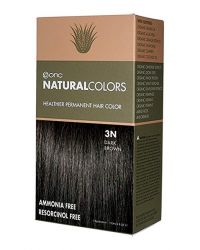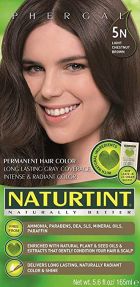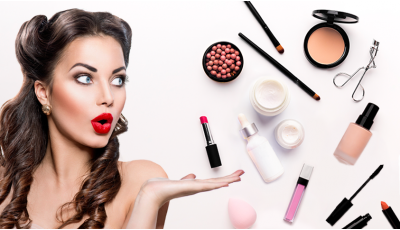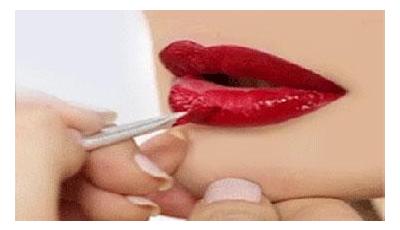
Resorcinol
Resorcinol, a common ingredient in rubber tires, acne medications and hair color. is derived from dihydroxy benzene in crude oil – one of the most basic petrochemicals. Resorcinol is classified by The World Health Organization (WHO) as an endocrine disruptor – the same classification also belongs to parabens.
HEALTH CONCERNS: Resorcinol is known to be a highly toxic skin irritant and is severely damaging to the immune system. It is also a frequent cause of hair dye allergy. Resorcinol is known to cause acute and/or chronic heart rate changes, breathing changes, weakness, severe headache, nausea, vomiting and restlessness.
WHAT TO AVOID: Hair Dye ingredients that contain the following forms of toxic resorcinol:
- M-phenylenediol
- 1,3-dihydroxybenzene
- M-hydroquinone
- 1,3-benzenediol
- 3-hydroxyphenol
- Oxidation base 31
- Resorcin

Para-Phenylenediamine
Para-phenylenediamine (PPD) are found in most permanent hair dye or oxidative dyes. It is the same chemical used in most textiles, dark coloured cosmetics, temporary tattoos, black rubber/tires, oils, photographic developing, photocopying and printing inks,and gasoline. PPD is in basically every chemical hair dye, even those hair dyes which claim to be natural, or "herbal" hair colours, that claims to be ammonia-free, contain PPD. Most hair salons also use hair dye products with PPD, so inform your hairdresser of any allergic reactions known or check with your dermatologist about “Patch testing” to confirm sensitivity prior to use.
HEALTH CONCERNS: Para-Phenylenediamine may cause: Asthma, Lupus, reactions (blistering and sores on your scalp), cancer, Delayed hypersensitivity, and non-Hodgkins lymphoma. This ingredient may also cause severe eye irritation, renal failure, dermatitis, gastritis, vertigo, tremors, convulsions, and coma in humans with acute allergy sensitivity.
WHAT TO AVOID: Try to limit hair dying to a minimum or try using alternatives such as a natural hair dyes made mostly of vegetable exacts. Natural hair dyes last up to a month to 5 weeks. Many companies have replaced PPD’s with PTD’s so that they can advertise their hair color as PPD free which is actually twice as toxic. Most Hair coloring process contains toxic pigmentation that requires ingredients that are not 100% organic.
PRODUCT LABEL: Try to avoid these Hair Dye ingredients that contain the following forms of Para-phenylenediamine:
- Phenylenediamine base
- PPD or PPDA
- p-Phenylenediamine
- 1,4-Phenylenediamine
- 4-Benzenediamine
- 1,4-Benzenediamine
- 4-Phenylenediamine
- para-Diaminobenzene (p-Diaminobenzene)
- para-Aminoaniline (p-Aminoaniline)
- Ursol
- Orsin
- Rodol

Toluene
TDS, also called toluene-2,5-diamine sulfate, is a colorless, translucent chemical that’s often mixed with hydrogen peroxide & coupler to create certain shades of black, blonde and gray hair dyes. Mostly found in crude oil and in the tolu tree, it is also added to gasoline and other products like adhesives, paint thinners, nail polish and rubber.
HEALTH CONCERNS: Dysfunction of the central nervous system following acute, intermediate or high inhalation exposure to toluene is a critical health concern. Including Reproductive effects, headaches and sleepiness, and can weaken your ability to think clearly. Low to moderate, day-after-day exposure in your workplace can cause tiredness, confusion, weakness, drunken-type actions, memory loss, nausea, and loss of appetite.
HOW TO AVOID: Stick to alternative vegetable hair dyes as a safer option, limit hair dying, read the label and look for ingredients specified as Toluene:
- Toluene-2.5-diamine sulphates


Lead Acetate
Lead Acetate has been used in the United States as a colorant in hair dyes for over 40 years. Recent studies reveal that lead leaves a residue on hands and surfaces, hair dryers and telephones, that eventually gets transferred to food, or children. Many Hair dyes contains more lead that the recommended dosage when some brands were randomly tested. Additional research shows that lead can penetrate through the scalp and cause significant health risk over time.
HEALTH CONCERNS: Symptoms of chronic lead poisoning can include difficulties in coordination and damage to mental abilities, including lowered learning ability and a shortened attention span and cancer risks.
HOW TO AVOID: Look for the following ingredients placed on labels and decide with caution for your own health and safety; Below are some of the toxic ingredients to avoid:
- Lead Acetate
- Chromium
- Thimerosal
- Hydrogenated Cotton Seed Oil
- Sodium Hexametaphosphate
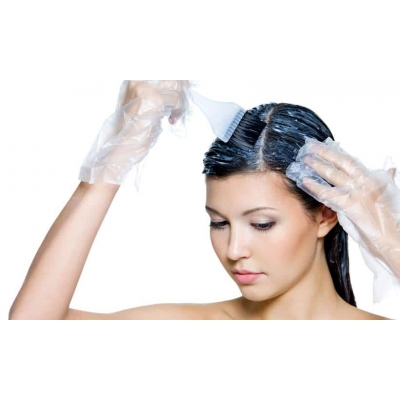

Ethanolamines
Hair has a natural pH between 4.5-5.5. So in order to color the hair, there needs to be an alkaline agent to raise or adjust the ph level for the color to penetrate the cuticle and get to the cortex. Typically Ammonia has been the ingredient used for many years in raising the pH to 10-10.5 so that the color stays in longer.
However, the harsh effects of Ammonia and its link to cancer led to many questions on Ethanolamines. What is the ingredient called Ethanolamines? Monoethanolamine (MEA)? Including substances like Diethanolamine (DEA) and triethanolamine (TEA). These complex sounding ingredients are used by hair dye companies that claims it’s less corrosive than ammonia in order to support their claims that their product is “ammonia-free”. The truth is the common substitutes that are quietly used like ethanolamines (MEA,TEA) are worse than ammonia because companies have to put in more of this substance to raise the pH levels of the hair for the color pigment to penetrate. This higher concentration damages the hair and increased color fading and damages the hair fibers leaving it very brittle over time. Studies have also shown high health risks.
HEALTH CONCERNS: Ethanolamines can severely irritate and burn the skin and eyes with possible eye damage, irritates nose, throat and lungs, shortness of breath, skin allergies, damage to liver and kidneys, high exposure affects nervous system, and linked to cancer.
HOW TO AVOID: Avoid the following ingredients placed on labels:
- Triethanolamine
- DEA
- TEA
- Diethanolamine
- cocamide DEA
- cocamide MEA
- DEA-cetyl phosphate
- DEA oleth-3 phosphate
- lauramide DEA
- linoleamide MEA
- myristamide DEA
- oleamide DEA
- stearamide MEA
- TEA-lauryl sulfate

[1] National Toxicology Program, “Report on Carcinogens, Twelfth Edition. Butylated Hydroxyanisole,” 13th Report on Carcinogens on October 2, 2014
.
[2] IA Review on Common Ingredients of Periocular Cosmetics and Their Hazards, Tang, Karen; Lu, Shu-Yi; Ma; Volume 19, Number 1, January 2015, pp. 30-38(9).
[3] Report on Carcinogens, Twelfth Edition (2011), National Toxicology Program, Department of Health and Human Services.
[4] “Hair Dyes and Cancer Risk,”National Cancer Institute. Hair Dyes and Cancer Risk. NCI Fact Sheet; August 2011.
[5] Environmental Protection Agency listing on P-phenylenediamine. Found online at: http://www.epa.gov/ttn/atw/hlthef/phenylen.html .
[6] Alternative Hair-dye Products for Persons Allergic to Para-phenylenediamine; Dermatitis. 2011;22(4).
-
Toxic 50 List
By Chemist BillDecember 21, 2021 -
Toxic Ingredients to Avoid in Lipsticks
December 29, 2021 -
Toxic Ingredients to Avoid in Shampoo
December 29, 2021
Search the blog
Article Categories
- All Articles (95)
- Rating Charts (1)
- Beauty & Skincare (17)
- FAQ (0)
- Hair Care (9)
- Health & Wellness (12)
- Anti-Aging (4)
- Kid's Health (0)
- Makeup (2)
- Men's Health (2)
- Oral Care (3)
- Sunscreen (7)
- Skin Tools & Treatments (10)
- Supplements (26)
- Videos (0)


